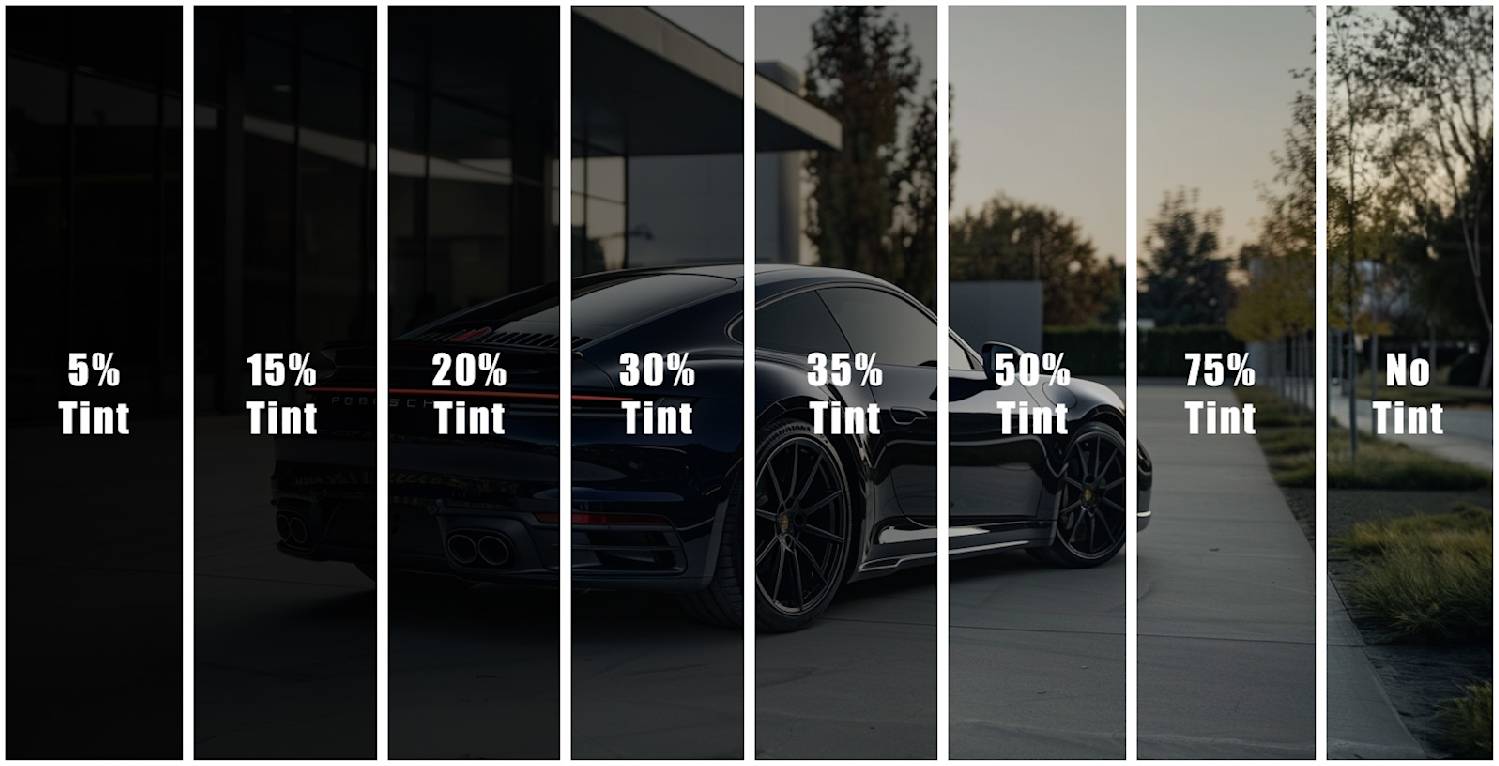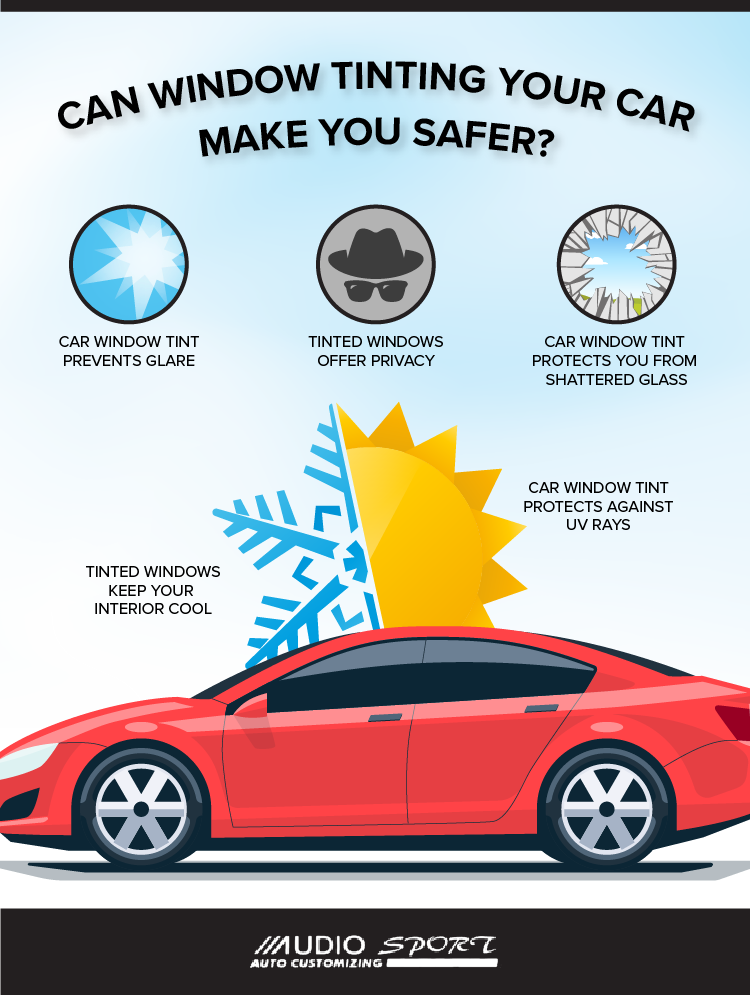Why Window Tinting Is the Best Solution for UV Protection and Glare Reduction
Window Tinting Rules: What You Need to Know Prior To Tinting Your Cars And Truck
Comprehending window tinting legislations is important for any kind of automobile owner thinking about tinting their vehicle. Rules differ significantly from state to state, establishing specific limitations for Visible Light Transmission (VLT) percentages, specifically for front-side home windows and windshields. Failing to adhere to these laws can result in penalties, the necessity to eliminate the color, and complications with insurance. As you ponder improving your lorry's appearance and performance, it is essential to understand not just the legal ramifications however additionally the practical factors to consider that feature selecting the best color. What factors should you prioritize in your decision-making procedure?
Relevance of Understanding Tint Regulations
Comprehending home window tinting legislations is essential for car proprietors to make sure conformity with state policies. These legislations dictate the allowable degrees of color darkness and reflectivity, which can considerably vary from one jurisdiction to another. Stopping working to abide by these laws can lead to fines, necessary removal of the tint, and possible issues throughout automobile assessments.
Furthermore, recognizing these laws aids automobile proprietors make educated decisions regarding their tinting alternatives. Various kinds of home window movies offer various advantages, such as UV defense, heat being rejected, and glow decrease. Nonetheless, without understanding of the legal limitations, vehicle owners take the chance of selecting items that might eventually cause legal concerns.
Furthermore, awareness of tinting laws promotes a much safer driving atmosphere. window tinting. Excessively dark tints can impair exposure, boosting the threat of mishaps, specifically at night or in adverse climate condition. Police likewise use these regulations to ensure road safety, making compliance not just a lawful commitment however an individual obligation
State-Specific Color Rules
Each state in the U.S. has actually established its own certain guidelines pertaining to home window tinting, mirroring a varied selection of needs and standards. These laws can vary substantially, affecting how vehicle owners come close to setup and conformity. Some states enable darker colors on back home windows while enforcing rigorous limitations on front-side windows.
Furthermore, guidelines commonly specify allowed tint materials and colors. Particular states ban reflective tints altogether, while others may permit them to a limited degree. Some territories mandate that cars with tinted home windows present a sticker label indicating conformity with state regulations, giving a clear recognition for regulation enforcement.
Enforcement of these regulations additionally differs; some states are a lot more positive, performing random checks, while others count on problems or noticeable violations to launch enforcement. Lorry owners need to understand that failing to follow state-specific color laws can cause penalties, necessary removal of unlawful colors, or both.

Lawful Color Percentages
Establishing the legal tint percents is critical for lorry proprietors looking for to abide by state policies. Each state has specific regulations controling how much light needs to go through the windows of a lorry, which is revealed as a percent called Noticeable Light Transmission look at these guys (VLT) This portion varies dramatically throughout states and can rely on the sort of home window-- front side, rear side, and windscreen.
For example, some states enable as low as 20% VLT on front side windows, while others might permit up to 50%. Windshield tinting is frequently extra limited, with many territories enabling just a slim band of tint on top of the windshield. On the other hand, rear home windows usually have more forgiving guidelines, with some states allowing darker colors.
It is important for car proprietors to familiarize themselves with their local regulations to avoid possible lawful issues. This consists of understanding exactly how VLT is measured, as it can vary based on the kind of window movie utilized. Staying educated regarding these policies ensures conformity and advertises risk-free driving conditions for both the vehicle owner and others when traveling.
Consequences of Non-Compliance
Falling short to stick to home window tinting regulations can lead to significant repercussions for vehicle owners. Police officers educated to recognize prohibited color degrees might issue fines, which can differ by territory however frequently range from moderate to significant amounts.

Insurance provider may likewise penalize for non-compliance, as unlawful alterations can be considered as a violation of policy terms. If a case takes place., this can influence protection prices or lead to problems in claims.
Ultimately, the consequences of non-compliance extend past prompt monetary fines; they can impact a motorist's insurance coverage rates, lawful standing, and total lorry value, stressing the value of you could try here adhering to local home window tinting laws.
Tips for Finding Tinting Options
Understanding the effects of non-compliance highlights the value of making informed choices when picking window tinting choices. Familiarize on your own with your state's specific regulations concerning color darkness and reflectivity. Each state has unique policies that determine the allowable limits, so guarantee you stay within these standards to stay clear of fines.
Secondly, take into consideration the type of color product. Choices consist of dyed, metalized, and ceramic colors, each offering differing levels of warm denial, UV security, and durability. Ceramic tints supply premium warm resistance without conflicting with digital tools, making them a popular option.
Furthermore, analyze your primary function for tinting. If you look for enhanced privacy, select darker colors; nonetheless, bear in mind that this may influence exposure in the evening. Conversely, if glare reduction and UV protection are your primary worries, lighter tints may be sufficient.
Last but not least, talk to a specialist installer that is well-informed about local policies and can recommend top notch products fit to your requirements Related Site (window tinting). Taking these factors into account will ensure you make a well-informed decision, ultimately boosting both your vehicle's looks and capability
Verdict
Finally, knowledge with home window tinting legislations is vital before using color to an automobile. Each state implements certain guidelines relating to visible light transmission percents, specifically for front-side windows and windshields. Non-compliance can cause substantial penalties, including fines and mandatory elimination of non-conforming color. By understanding lawful demands and choosing ideal color materials, vehicle proprietors can accomplish aesthetic enhancement while staying compliant with pertinent legislations. Adherence to these guidelines makes certain both security and complete satisfaction.
Recognizing window tinting legislations is essential for any type of lorry owner considering tinting their cars and truck.Understanding window tinting legislations is critical for vehicle owners to make sure conformity with state laws. Some states allow darker tints on rear windows while enforcing stringent restrictions on front-side windows.
In contrast, rear windows normally have extra lenient policies, with some states permitting darker colors. (window tinting)
In verdict, familiarity with window tinting laws is important prior to applying tint to an automobile.